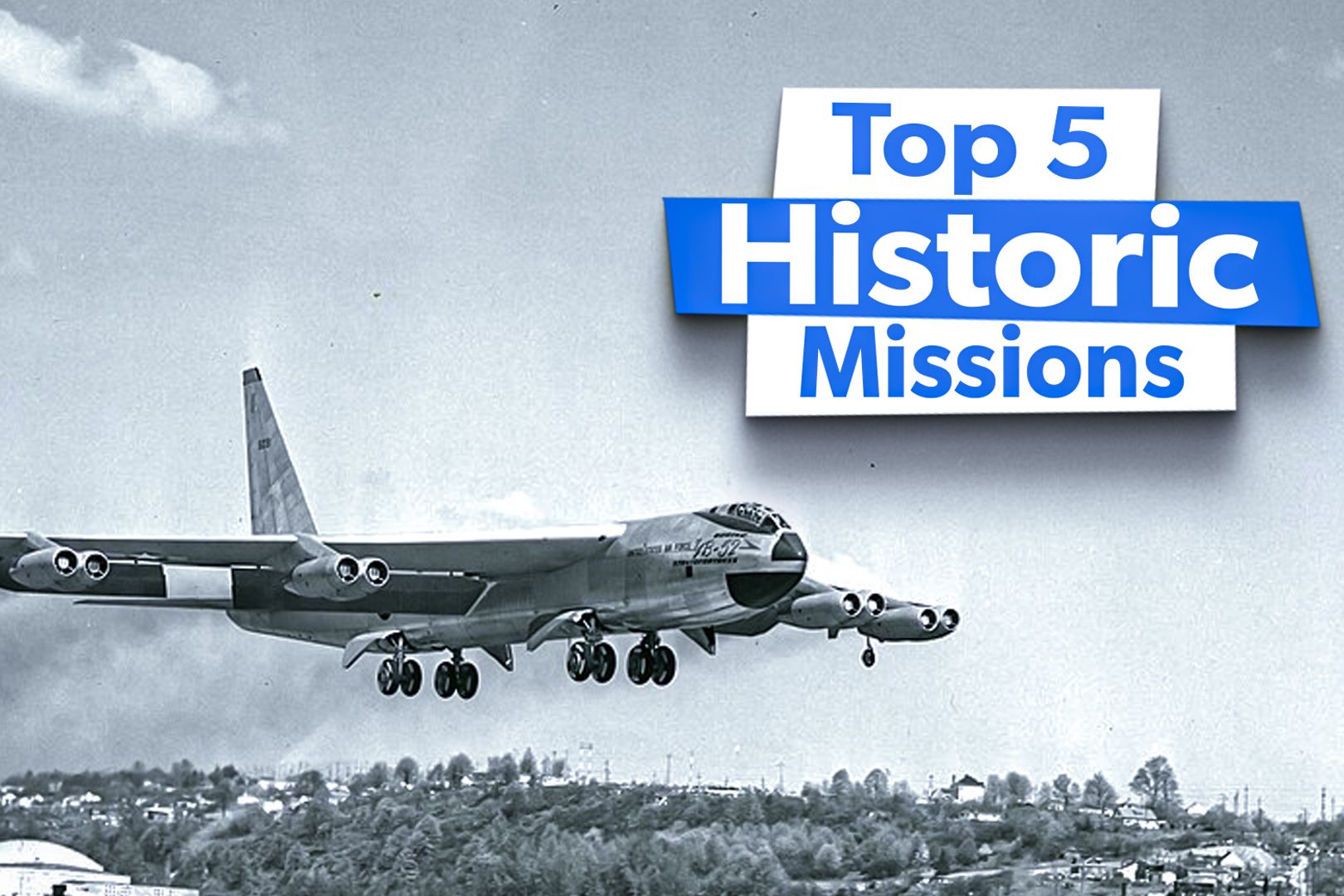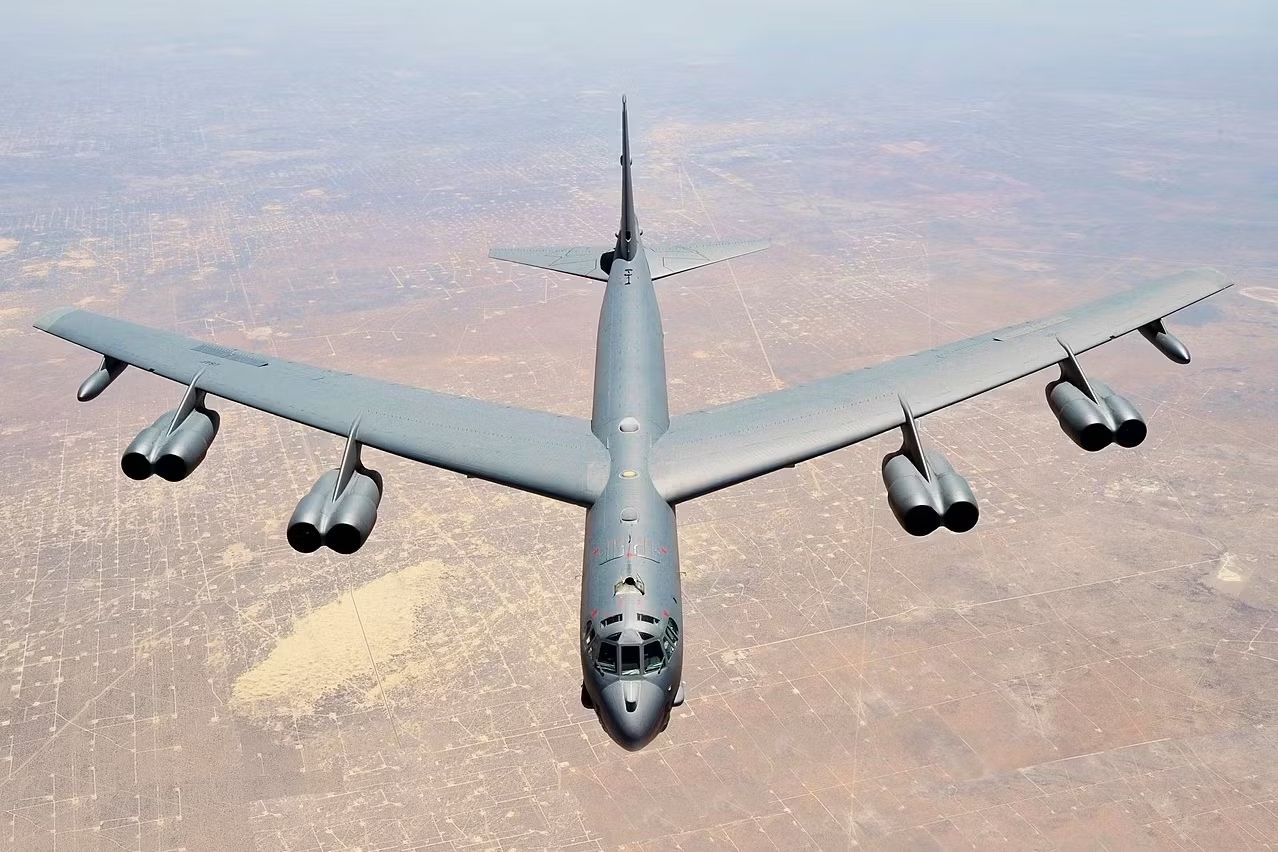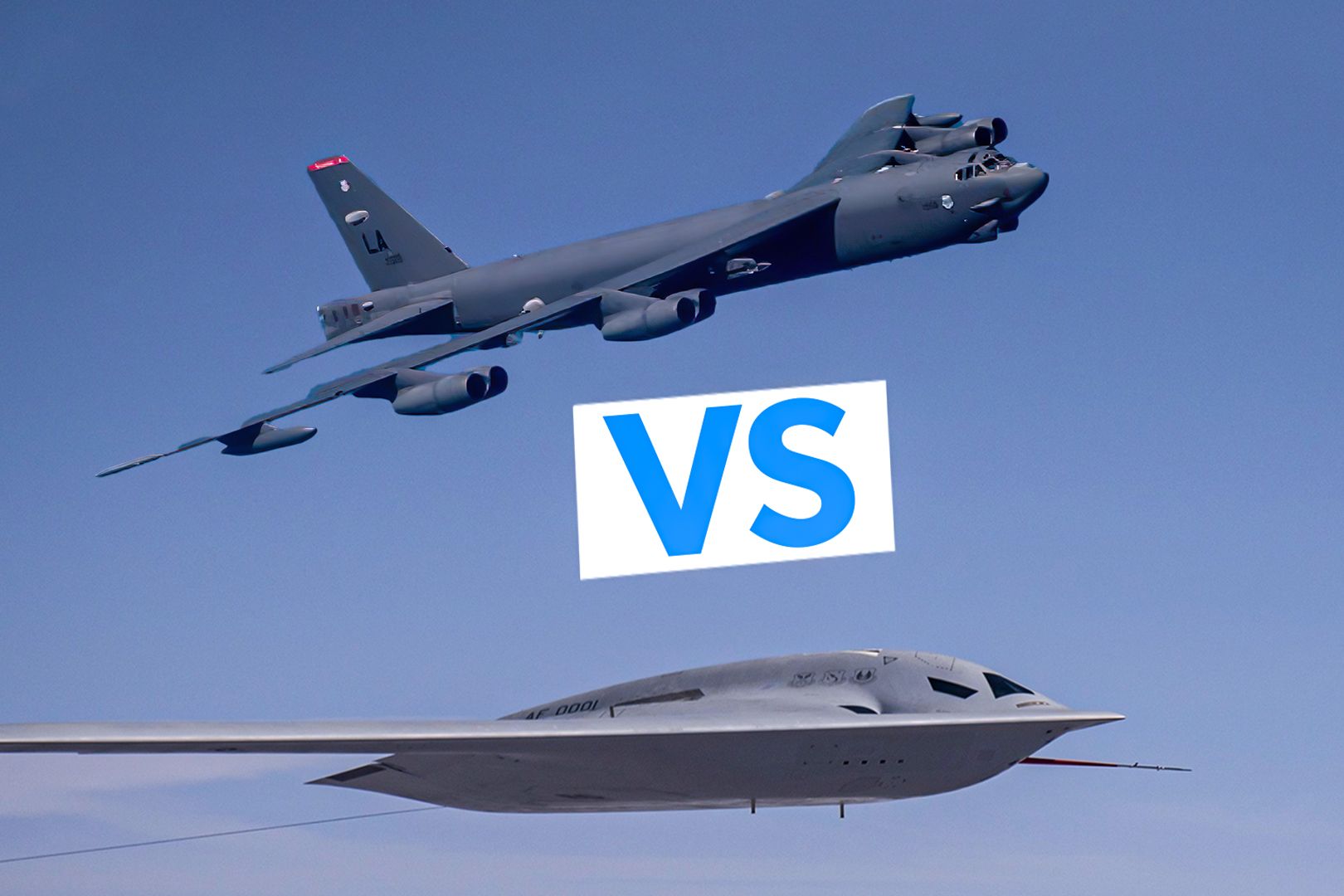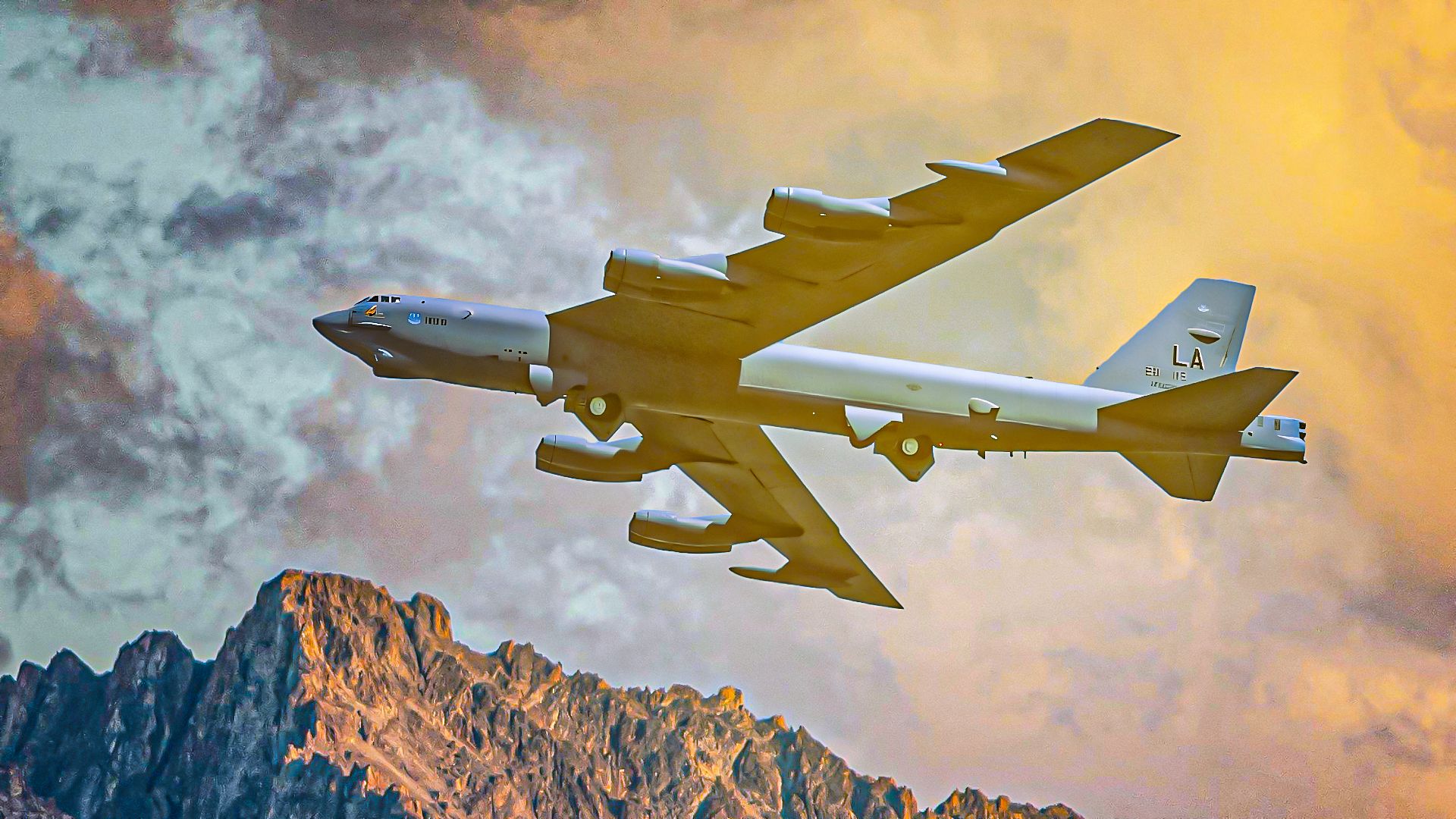Summary
- The B-52’s versatile capabilities include precision strikes & old-fashioned carpet bombing for maximum impact.
- Despite not carrying nuclear gravity bombs, the B-52 is still nuclear-capable.
- The B-52’s evolving role in modern warfare involves standoff attacks, precision-guided missiles, & adapting to updated technologies.
The US Air Force’s legendary Boeing B-52 Stratofortress has operated for seven decades, having made its maiden flight back on April 15, 1952. A major reason for the B-52’s staying power (besides its sheer destructive force) has been its amazing versatility and adaptability to missions and applications that its original designers probably didn’t even envision during the heady early days of the Cold War.

Related
Top 5 Historic Missions Of The B-52 Stratofortress
The B-52 is America’s most accomplished bomber of the post-WWII era. Let’s take a look at some of this illustrious aircraft’s most defining missions.
Simple Flying now examines the multi-functional capabilities embodying this versatility, which keeps the “BUFF” (Big Ugly Fat Fellow) going strong decades later.
Standoff attack/Precision strike
This was probably the function farthest from the minds of the BUFF’s designers and the USAF brass alike when the mighty warbird debuted, but it has proven valuable.

Related
Congress Wants US Air Force B-52 Bombers To Carry Nukes Again
Around 30 B-52s may be reconverted to carry nuclear weapons in a reversal of New START limitations.
As the US Air Force Nuclear Weapons Center Fact Sheets notes:
“In a conventional conflict, the B-52 can perform strategic attack, close-air support, air interdiction, offensive counter-air and maritime operations…B-52s are equipped with advanced targeting pods. Targeting pods provide improved long-range target detection, identification and continuous stabilized surveillance for all missions, including close air support of ground forces. The advanced targeting and image processing technology significantly increases the combat effectiveness of the B-52 during day, night and less than ideal weather conditions when attacking ground targets with a variety of standoff weapons (e.g., laser-guided bombs, conventional bombs and GPS-guided weapons).”
“This includes gravity bombs, cluster bombs, precision-guided missiles and joint direct attack munitions [JDAMs]…The B-52 also played a role in Operation Iraqi Freedom by launching approximately 100 CALCMs [Conventional Air-Launched Cruise Missiles] during a night mission March 21, 2003.”
Good old-fashioned carpet-bombing
This is probably what most military aviation enthusiasts envision when they think of the B-52’s combat history, and rightfully so. After all, this is where the “BUFF” truly cemented its legendary reputation. Carpet-bombing raids use conventional gravity bombs (known as “dumb bombs” because they’re not precision-guided). These munitions may not have the pinpoint surgical accuracy that smart bombs do, but for sheer physical devastation and psychological impact on the enemy, they’re incomparable. We’re talking about a payload of 70,000 lb (31,500 kg) worth of bombs!
As I noted in my “Top 5 Historic Missions for the B-52 Stratofortress” piece for Simple Flying:
- Operation Arc Light, the devastating missions of 1965-1973 against Viet Cong and North Vietnamese Army (NVA) troop formations during the Vietnam War.
- Operation Linebacker II, the December 1972 “Christmas bombing” of Hanoi, the effects of which drove the North Vietnamese back to the peace table and damn near won the Vietnam War for the US.
- Operation Desert Storm, the 1991 Persian Gulf War, where the incessant carpet-bombing raids against Iraqi dictator Saddam Hussein’s elite Republican Guard troops were so psychologically devastating that at least one Republican Guard unit commander surrendered his troops even though his particular unit hadn’t even been bombed by the BUFFs! According to the USAF Fact Sheets, “During Desert Storm, B-52s delivered 40 percent of all the weapons dropped by coalition forces.”
- Operation Allied Force, the 1999 NATO aerial bombing campaign against Yugoslavia to stop Serbian ethnic cleansing of Kosovo’s Albanian Muslim populace; a June 8, 1999, B-52 carpet-bombing strike finally wrought tangible physical damage to Serbian troop formations and compelled the survivors to flee the battlefield in stark terror.
- Operation Enduring Freedom (OEF): during the initial, more successful months of the Global War On Terror (GWOT) being waged in Afghanistan, playing a key role in the overthrow of the Taliban government in Kabul thanks to the massive casualties inflicted by the B-52 strikes (accounting for a third of the total bomb tonnes in Afghanistan in 2001).
Still nuclear capable
This was the original mission that the plane’s designers and the so-called “Bomber Mafia” generals, like the unforgettable Gen. Curtis Emerson LeMay (November 15, 1906 – October 1, 1990) *did* have in mind.
Now, to be sure, the old-school nuclear gravity bombs that the B-52 used to carry are no longer a going concern. Not because the BUFF’s nuclear mission is being completely scrapped, but rather because newer technologies rendered obsolescent the old-school, high-risk form of nuclear weapons delivery, i.e., penetrating Soviet airspace to drop the payload directly above the target.(As immortalized in the closing scene Stanley Kubrick’s classic 1964 satirical black comedy film “Dr. Strangelove or: How I Learned to Stop Worrying and Love the Bomb“).
As Joseph Trevithick of The Warzone explains in a January 2020 article:
“A U.S. Air Force manual has confirmed previous reports that the service’s iconic B-52H bombers are no longer authorized to carry nuclear gravity bombs. The only nuclear weapon these aircraft are presently certified to carry is the AGM-86B Air Launched Cruise Missile [ALCM], which is set to eventually get replaced by a new stealthy missile under development now under the Long Range Stand Off program, or LRSO.”
The Federation of American Scientists (FAS) provides some additional details in a May 2017 piece:
“US Strategic Command (STRATCOM) apparently has not been assigning nuclear gravity bombs to B-52 bombers since at least 2010. Today, only the 20 B-2 stealth-bombers are tasked with strategic nuclear gravity bombs under the nuclear strike plans.”

Related
B-21 Vs. B-52H: What’s The Difference Between The Raider And The Stratofortress?
These two aircraft will form the backbone of the USAF’s bomber force for years to come.
“The reason for the change appears to be that the B-52 is no longer considered survivable enough to slip through modern air defenses and drop nuclear gravity bombs on enemy territory.”
Given the ever-increasing tensions between the US and nuclear-armed adversaries Russia, China, and North Korea, one definitely cannot completely write off the BUFF’s potential as a Doomsday Delivery Device.

